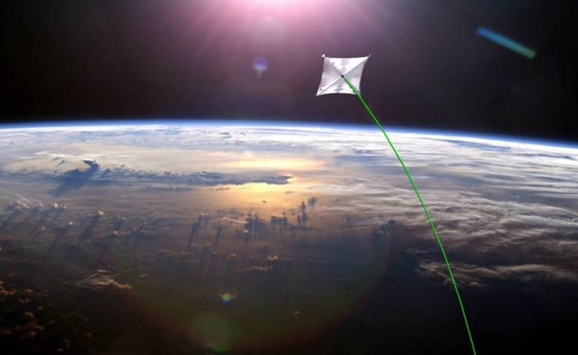NASA Launching World’s Largest Solar Sail In 2014
This article is more than 2 years old
It’s been many years since gas prices were at a level that was actually fitting for the product’s worth. But for all the griping I could do, I can’t deny the convenience of a gas station. If I’m traveling somewhere far, I don’t have to worry about stocking up all the fuel I’d need beforehand, because I know I can just stop at some point along the way. Astronauts and their spacecraft do not have this luxury, and as such, the freedom of space travel has been a limited commodity for humankind. But let’s imagine a craft that wouldn’t need the heavy, space-wasting bulk of liquid propellant in order to travel from one planet to the next.

To be launched in 2014, NASA is developing the largest solar sail ever constructed. NASA will be working with the California tech development company L’Garde to build Sunjammer, a solar sail measuring around 124 ft x 104 ft, for a surface area of over 13,000 feet, just about a third of an acre. The sail will be made from Kapton, a super-lightweight film created by chemical company DuPont, which is only five microns thick. It weighs only 70 pounds when folded up and takes up the same amount of space as a washing machine. Incidentally, the name Sunjammer comes from an Arthur C. Clarke story, which involves a race between solar sail-sporting space-yachts.
Solar sails are the holy grail of future space travel, as they’re powered by photons and radiation pressure from stars, so they don’t rely on any kind of liquid propellant. NASA’s goal is to send Sunjammer, which will be launched into space atop a SpaceX Falcon 9 rocket, to an area 1.8 million miles towards the sun in a gravitationally stable area called the Earth-Sun Lagrange Point 1.
Though Sunjammer’s mission will serve more for observational purposes than any other practical application, its success will have a huge impact on space travel and monitoring space weather. Considering NASA’s eventual goal of setting up lunar and planetary bases as stations for material development, it would be a hell of a lot easier to remotely develop solar sails than rely on thousands of gallons of jet fuel.
An additional fun fact of Sunjammer’s story is that it will be carrying the cremated remains of several people, a service provided by Celestis, Inc. They will include the ashes of Star Trek creator Gene Roddenberry and his wife, Majel Barrett Roddenberry. They’ll be going where nothing that used to be a man or woman has gone before, but that doesn’t sound as catchy.












